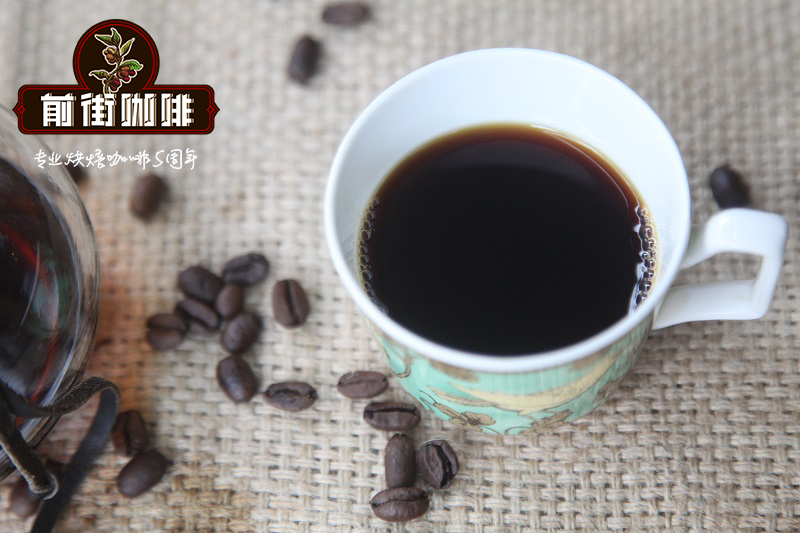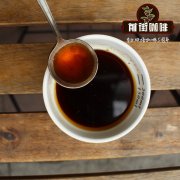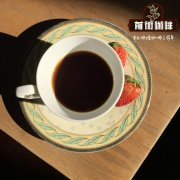How to eliminate the astringency of coffee? is there any coffee that is not astringent? The coffee made by oneself is astringent.

Professional coffee knowledge exchange more coffee bean information please follow the coffee workshop (Wechat official account cafe_style)
The oils and colloids of coffee create a smooth taste in the mouth, but the polyphenols of coffee produce a rough astringency. Although astringency is an important taste of wine, coffee has an astringent feeling, like an ugly devil's tail, which is wild in the mouth and makes it unpleasant.
Why does this cup of coffee have no silky taste?
What is "astringent"? Although "astringent taste" is a feeling derived from oral taste, it is different from ups and downs. It is not a taste, but a sense of touch. Strictly speaking, it should be called "astringency". It is the reaction between polyphenols in food and saliva proteins in the mouth, creating a sense of roughness and discomfort. Astringent polyphenols exist in a variety of fruits, tea, red wine, chocolate, coffee, such as chlorogenic acid, tannin, catechin and so on.
In fact, astringency exists in many things, such as red wine tannin, such as tea catechin, when it comes to coffee, it is chlorogenic acid. Chlorogenic acid and caffeine are mainly the products of plants after responding to environmental changes, so the content of chlorogenic acid also reflects the growth status of a raw bean.
There are usually several situations in which astringency occurs:
1. The coffee fruit has been harvested and processed before it is ripe enough.
2. The dehydration during baking is not complete and the baking is not uniform.
3. Mixed with defective beans, such as worm-eaten beans and immature beans.
4. The parameters and techniques of cooking.
However, astringency is not all bad, we will also divide astringency into good astringency and bad astringency.
The negative astringency will expose the defects in the quality of coffee, and it is difficult to reverse the astringency produced in the process of coffee planting or processing. For example, coffee fruit is actually picked with leaves, or the fruit has been picked before it is ripe enough; in the baking stage, improper baking and uneven baking is also one of the causes of astringency.
But even the coffee beans that have been carefully picked and selected will have a certain sense of astringency within a few months after processing. The right amount of astringency can enrich the level of coffee and make the taste of coffee stay longer. If bitterness can return to sweetness and astringency can give birth to fluid, high-quality bitterness is sometimes a symbol of the quality of coffee.
Judging from past experience, the first new kidney beans obtained each year usually have a certain degree of astringency during the cup test, and this performance precisely shows that the beans are fresh enough. The astringency of these freshly processed coffee beans usually fades after 3 to 4 months, so when tasting these new season coffee beans, the astringency is the evidence of the freshness of the raw coffee beans.
What circumstances will lead to the astringency of the brewed coffee? By Front Street Coffee
When there is no problem with baking, it may be mixed with defective beans or problems with cooking parameters and techniques.
Therefore, be sure to pick defective beans before cooking! Be sure to pick defective beans! Be sure to pick defective beans!
The astringent feeling is mainly caused by the lack of partial over-extraction caused by over-extraction and uneven extraction.
The total substance of coffee beans contains only 30% of the water-soluble substance, and the remaining 70% is made up of insoluble fiber and carbohydrates. 20% of the water-soluble substances bring good flavor to the coffee, while 10% of the soluble substances have a terrible taste that keeps people away. Excessive extraction will extract the unacceptable bad flavor from the coffee and turn it into a numb bitterness on the tip of the tongue.
| overextraction |
Excessive extraction is mainly due to the bitter taste of the tail, the bitterness of the impurities extracted, the high water temperature (or the heat source continues to heat the water temperature), too fine grinding or too much ultra-fine powder, and stirring too much, which will lead to over-extraction. sometimes we wait for the water in the filter cup to drop in just a few seconds, there will be extraction.
| | uneven extraction |
Uneven extraction will mainly cause flavor imbalance, acidity caused by excessive sour taste, steaming and uneven water supply in the process of cooking will lead to over-extraction of coffee powder.
The water supply is uneven, that is, the water column is suddenly thin and thick, the circle is not round, and the water injection is asymmetrical, resulting in water flooding through the filter paper where there is more water; where there is less water, the coffee powder cannot be completely wet, and the steaming effect is greatly reduced. Finally lead to water injection extraction, part of the extraction is excessive, part of the extraction is insufficient, the flavor is messy, and it is easy to appear astringency.
[tips]
Qianjie Coffee tells you how to distinguish between astringency, tea and dryness?
Astringency, is a sense of touch or pain, the editor thinks that it is a kind of non-smooth touch, there is a dusty, rustling feeling. Astringency and smoothness are the two major tastes of coffee, astringency will be deducted points in the cup test process, while smoothness will be added points.
Astringency is not equal to the sense of tea, which is understood as the sense of tea, because some people think that tea is also bitter, but some green tea has no bitter taste and has a strong sense of sweetness. as long as the correct brewing method and water temperature are adopted, there is no bitterness and smoothness in the drink. For example, we often drink the flavor of green tea in rose summer, which is extracted correctly but not astringent. Similarly, when we drink black tea in Sidamo and black honey in Costa Rica, we drink oolong tea, which is slightly bitter and has a long aftertaste in the mouth. Sweetness gradually exceeds bitterness, and finally ends with sweetness.
Dryness, generally speaking, after the entrance of coffee, dryness occurs when drinking coffee, which will make the throat uncomfortable and cause the dryness of the throat, which is usually called "dryness". There is also a saying in drinking tea, also known as "throat locking". Most of the dryness is because the beans are too fresh or because they are not evenly dehydrated during baking.
Usually in the process of cooking, if there is a sense of astringency, you might as well first feel whether it is bitter or sour? If it is bitter, it may be because there are too many substances extracted, so you can try to adjust the cooking parameters or remove the tail section, while if it is sour, it may be because the extraction is uneven. Then we need to see if there is any room for improvement in cooking techniques!
END
Important Notice :
前街咖啡 FrontStreet Coffee has moved to new addredd:
FrontStreet Coffee Address: 315,Donghua East Road,GuangZhou
Tel:020 38364473
- Prev

Costa Rican Dia Aiji washes orange hard candy, ginger flower, taffy
Professional coffee knowledge exchange more coffee bean information please follow the coffee workshop (Wechat official account cafe_style Costa Rica Dia Aiji washing production area: Costa Rican varieties: Dia Aiji treatment: washing treatment roasting degree: shallow flavor description: orange hard candy, ginger flower, toffee. All coffee cherries are picked by hand, only ripe red
- Next

Which treatment of rose summer tastes good? which treatment of rose summer coffee is sweet?
Professional coffee knowledge exchange more coffee bean information Please follow the coffee workshop (Wechat official account cafe_style) A guest asked Qianjie coffee, which treatment of rosy summer tastes good? What kind of Rosa Coffee can be sweet? First of all, let's take a look at what we can do. The common coffee treatment methods are mainly divided into: sun treatment, water washing, and between the sun.
Related
- Detailed explanation of Jadeite planting Land in Panamanian Jadeite Manor introduction to the grading system of Jadeite competitive bidding, Red bid, Green bid and Rose Summer
- Story of Coffee planting in Brenka region of Costa Rica Stonehenge Manor anaerobic heavy honey treatment of flavor mouth
- What's on the barrel of Blue Mountain Coffee beans?
- Can American coffee also pull flowers? How to use hot American style to pull out a good-looking pattern?
- Can you make a cold extract with coffee beans? What is the right proportion for cold-extracted coffee formula?
- Indonesian PWN Gold Mandrine Coffee Origin Features Flavor How to Chong? Mandolin coffee is American.
- A brief introduction to the flavor characteristics of Brazilian yellow bourbon coffee beans
- What is the effect of different water quality on the flavor of cold-extracted coffee? What kind of water is best for brewing coffee?
- Why do you think of Rose Summer whenever you mention Panamanian coffee?
- Introduction to the characteristics of authentic blue mountain coffee bean producing areas? What is the CIB Coffee Authority in Jamaica?

